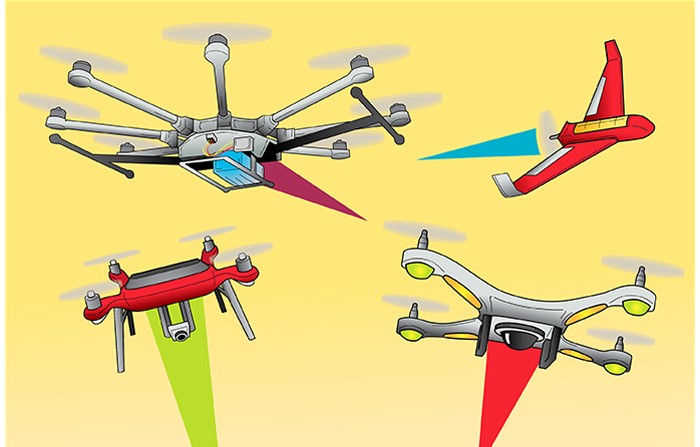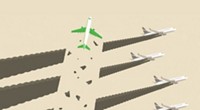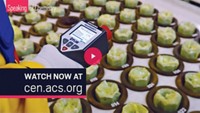Advertisement
Grab your lab coat. Let's get started
Welcome!
Welcome!
Create an account below to get 6 C&EN articles per month, receive newsletters and more - all free.
It seems this is your first time logging in online. Please enter the following information to continue.
As an ACS member you automatically get access to this site. All we need is few more details to create your reading experience.
Not you? Sign in with a different account.
Not you? Sign in with a different account.
ERROR 1
ERROR 1
ERROR 2
ERROR 2
ERROR 2
ERROR 2
ERROR 2
Password and Confirm password must match.
If you have an ACS member number, please enter it here so we can link this account to your membership. (optional)
ERROR 2
ACS values your privacy. By submitting your information, you are gaining access to C&EN and subscribing to our weekly newsletter. We use the information you provide to make your reading experience better, and we will never sell your data to third party members.
Environment
Drones swarm to science
Flying robots are doing experiments too hazardous, too expensive, or simply impossible for humans
by Sarah Everts and Matt Davenport
February 29, 2016
| A version of this story appeared in
Volume 94, Issue 9

- Drones swarm to science
- How drones help us study our climate, forecast weather
- Drones 101: An Illustrated Introduction To Flying Data Collectors
- Drones detect threats such as chemical weapons, volcanic eruptions
- Drone-curious? Here’s how to fly science missions legally
- How drones can help keep our food supply safe
- Drones scout out locations for energy-generating wind turbines
- Snatching whale snot from the sky and other adventures in wildlife conservation
- What’s on the horizon for drones doing science?
Alarmists might argue that we’re already living in the dystopian future that science-fiction writers have been imagining for decades.
Flying robots called drones now number in the millions. They’re spying on our neighbors and infiltrating the airspace of our world leaders. They’re even threatening the safety of civilians, as evidenced by recent near misses with commercial airliners and alpine skiers.
But this argument neglects the good that drones can do. Drone advocates worry that the sins of hobbyist pilots overshadow the work of scientists deploying these aircraft to solve climate puzzles, to track airborne pathogens, and to monitor chemical plant operations.
“The attention has been so much on a 1-kg vehicle crashing and not so much on its ability to transform and save lives,” says Greg Crutsinger of 3D Robotics, North America’s largest manufacturer of drones.
In this collection of vignettes, C&EN examines the confounding case of drones. These aircraft are enabling chemists and other researchers to change the way we see the planet and protect its inhabitants while simultaneously confronting regulators with new threats to privacy and safety. Even their nomenclature can be problematic—many, if not most, researchers refer to these machines as unmanned aircraft systems (UASs) or unmanned aerial vehicles (UAVs) to avoid militaristic connotations.
These stories will help you navigate the variety of drones ready for research and the rules researchers need to follow to do airborne science legally. But we also hope these tales of drones helping scientists study and monitor wildlife, climate, agriculture, and hazards will inspire you.
These vignettes are meant to exemplify, rather than catalog, all the innovative efforts of researchers to integrate drones into their portfolio of data-gathering tools. Now, sit back, relax, and enjoy the flight.
Skyrocketing flight
It’s hard to say how many research drones are flying in the U.S., says Colin Snow, CEO of the market research firm Drone Analyst. But we do have stats on how many professional drone users are flying with Section 333 exemptions—exemptions granted by the Federal Aviation Administration to those flying drones for commercial uses,including real estate and agriculture.
3,300+
Number of S333 exemptions granted by FAA
1.1 million
Number of drones sold in the U.S. in 2015 (more than twice the total from 2014)
2.9 million
Anticipated number of drones that will sell in 2016
75–80%
Percentage of drones used in commercial applications that are off-the-shelf, consumer products. Overall, 46% are made by the Chinese company DJI. “It’s the drone’s software that lets you take a consumer product and fly high-value missions,” Snows says.
Source: Drone Analyst/FAA
Dear Reader,
Are you flying high with your science? Tell us how you’re using drones to get data. And send us your cool pics & videos too! We’ll post our favorite submissions.
CORRECTION:
On March 8, 2016, the entry form at the bottom of this page was adjusted to include a checkbox that queries whether submissions have been carried out in accordance with applicable regulations. We will make sure any submissions we post were carried out as such.





Join the conversation
Contact the reporter
Submit a Letter to the Editor for publication
Engage with us on Twitter